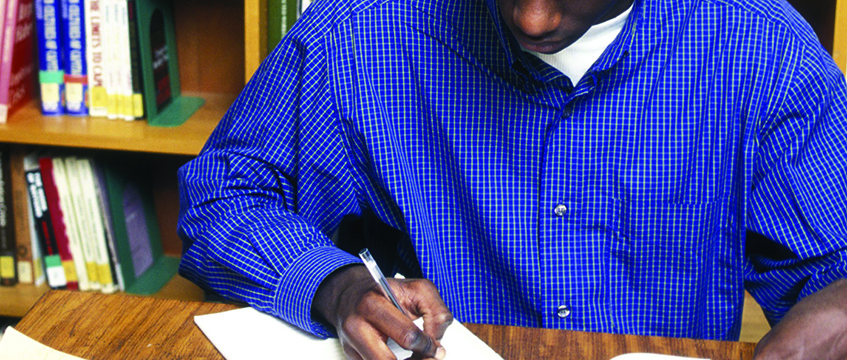Peter McCrea explains how the skill of expert report writing is very similar to preparing and submitting coursework
As a surveyor member of the Upper Tribunal (Lands Chamber) (or the “Lands Tribunal” in old money), I read something in the order of 50-60 expert reports each year.
The majority of these are written by surveyors about the value of property, but the tribunal is also required to familiarise itself with more esoteric subjects as part of the dispute-resolving process – how the gas market operates, franchise modelling in the retail sector, or, most recently, the world of super-yachts.
Good writing skills are key
Many of the features of a good expert report apply equally to the documents written by student members, APC candidates, surveyors applying for their first job or newly qualified valuers writing their first valuation report under their own name for a paying client – and we all remember how nerve-wracking that was.
Irrespective of the topic, the purpose of an expert report is, or at any rate should be, the same. The author is a specialist in their field whose opinion carries weight, and is assisting the tribunal in arriving at the “right” answer, rather than promoting the case of those paying for the report.
Inevitably, expert reports are of mixed quality. The very best can swing a case, particularly when reinforced by persuasive, credible and obviously unbiased oral evidence. The very worst will have no weight attached to it – an expensive waste of time – and may destroy both the expert’s credibility and, often, a party’s case.
The basic format can, of course, vary. I am not an enthusiast of the “tell what you are going to tell; then tell it; then tell what you have told” school, but there is something to be said, especially in highly technical subjects, for including a high-level precis of the main points and a summary of the expert’s opinion on each topic.
“Excellence is an art won by training and habituation. We do not act rightly because we have virtue or excellence, but we rather have those because we have acted rightly. We are what we repeatedly do. Excellence, then, is not an act but a habit.” – Aristotle
Quality, not quantity, counts. A concise report that covers all the points in an accessible fashion will be welcomed by the busy reader. It should be printed using a “regular” font (Jokerman or Comic Sans might not strike the right note), in 12-point size, and, say, 1.5 line spacing, with plenty of room in the margins for handwritten comment.
Paragraphs should be numbered, as should pages, but bear in mind that if your report is going to find its way into an evidence bundle, that will have its own pagination which can clash with yours, so check with those instructing you as to where on the page they would like your “internal” numbering. Graphs and charts should also be numbered and cross-referenced in the text.
Photocopying, presentation and proofreading
A common problem is when the original report is beautifully produced in colour, only to be copied in black and white for inclusion in the hearing bundle – so “edged red on the attached plan” becomes meaningless. My other pet hate – encountered surprisingly frequently – is an original A3 page folded and then copied on an A4 sheet in such a way that one can only see the two extremities.
How should transaction evidence be presented? Excel schedules are helpful, but are often printed on A4 so the text is too small to make out. A well-known rating barrister who appears before the tribunal on a regular basis has a favourite party trick of pulling out a magnifying glass to decipher the schedule of the witness he is cross-examining, saying: “What I think Mr Bloggs’ schedule says, Sir, is…” Consider how the schedule is likely to be presented to the end user and make allowances where possible.
Another fault that often arises is where the analysis of a piece of evidence has obviously been tweaked in the final stages of drafting the report, but the untweaked version has remained in the appended schedule. The tribunal will notice this (I invariably have my calculator to hand or will check the maths using Excel) as part of its pre-reading. At best, you will look careless and at worst your first thoughts will be exposed to cross examination, but in either case the own goal is easily avoided.
Talk and agree some things early on
The tribunal encourages experts to liaise at an early stage and to agree measurements, the details of comparable evidence and other uncontroversial facts.
Make sure the properties are actually comparable. During a site inspection a year or so ago, two surveyors took the tribunal on a half-hour drive to see a “comparable” property. However, on arrival both experts agreed the property wasn’t comparable at all and we could discount it.
The world is not perfect, particularly in property, and the available comparables will not all point to the same answer. Do not be tempted to apply irrational end allowances in striving to show that all the comparable evidence, when adjusted, points to exactly the same figure – it damages your credibility as an objective professional.
Check that what you are saying in your report is consistent with – or at least not wholly at odds with – how the topic is covered on your firm’s website. Experts can be immediately thrown by this sort of discrepancy being put to them at the start of cross-examination.
Don’t forget the RICS
Expert reports by chartered surveyors must comply with the mandatory RICS practice statement and guidance note Surveyors acting as expert witnesses, currently in its fourth edition, although the process of redrafting a fifth edition is about to commence.
Compliance with the practice statement is taken seriously by the tribunal, and experts who flout or simply pay lip service to it can find themselves subject to judicial criticism in the published decision, which may lead to RICS investigating whether there has been a regulatory breach.
All too often, a paragraph is shoved in at the end of a report claiming compliance with the practice statement when the document patently does not do so. There are two parts in PS5 which the surveyor must include – quoted verbatim – in the report, which are the Statement of Truth (taken from the Civil Procedure Rules) and the Declaration, within which the surveyor confirms that he or she is not instructed on a contingency fee basis and has no conflicts of interest.
If the report claims to be compliant and isn’t, or does not include the correct wording, the author runs the risk of the opinions expressed being disregarded, or the report being returned to be corrected prior to the hearing.
Replies and rebuttals
Replies or rebuttal reports should be short and focused on what is really the issue. It is helpful if the original report’s paragraph numbering is adopted. It is unhelpful for every paragraph to be referred to with a comment such as “noted”. Confine the rebuttal report to matters of substance. And avoid a heavy reliance on “cut and paste” – your opponent’s comparables cannot surely be subject to exactly the same criticism.
The objective expert should genuinely be open-minded. When I was in practice conducting, for instance, rent review arbitration for a client, I would often say in my rebuttal that I agreed with some of the points my opponent had made, and had adjusted my opinion of rental value accordingly. The practice statement obliges you to amend your report when new information comes to light.
Rebuttal reports might be unnecessary if the experts have liaised sufficiently before writing their first reports to understand each other’s position. The practice statement encourages experts to narrow the issues, and the tribunal usually directs that they should do so.
This can lead to the production of a very useful document – the statement of agreed facts and issues. Sometimes the parties themselves will record the facts on which they agree and any issues of law or fact, but only the experts can identify the matters on which they agree or disagree and summarise their own reasons for that disagreement.
We would encourage experts to produce this statement at an early stage as a working document for themselves, and to update it as issues are clarified or narrowed. Experts should be the joint authors – not lawyers. It helps the tribunal enormously and seeing your opponent’s position – and refining where the real dispute lies – is indispensable. A properly considered joint statement will often enable the parties to achieve settlement of individual points or occasionally the whole case.
Final thoughts
In summary, whether writing an expert report for court, a client report, a piece of coursework or your final APC submission, put yourself in the position of the reader. Does the document tie together? Are appendices where they are meant to be? Have you checked the maths? And, fundamentally, has the report got integrity and does it express your honest opinion?
The objectivity of experts has been called into question in recent years. However, the civil justice system, the RICS and the public interest all rely on professional expert evidence. If the case made and the views expressed are valid, evidenced and honest, it can play a vital role in resolving disputes. Good habits for this start at university.
Peter McCrea FRICS FCIArb is one of the three chartered surveyors who sit with eight judges in the Upper Tribunal (Lands Chamber).
Mainly for Students is edited by Paul Collins of Nottingham Trent University. He is also an external examiner at other universities and a RICS APC assessor. Paul welcomes suggestions for the column and can be contacted at paul.collins@ntu.ac.uk.
Read more Mainly for Students columns at www.egi.co.uk/news/mainlyforstudents











